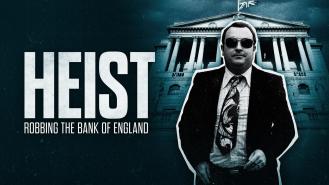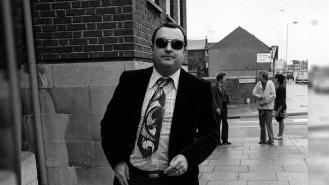
The £292m heist: Inside the City Bonds Robbery
Heist: Robbing the Bank of EnglandThere have been plenty of well known heists that have occurred throughout history, such as The Great Train Robbery and the Hatton Garden robbery. One particularly noteworthy heist is the City Bonds Robbery. As the name suggests, the robbery revolved around the theft of millions of pounds worth of bearer bonds.
Our upcoming documentary, Heist: Robbing the Bank of England, will dive deeper into the robbery. In the meantime, we’re going to take a more condensed look at the City Bonds Robbery to cover the basics, such as how it happened and who was involved.
Planning the robbery
The general idea to steal bearer bonds came when a particular story was reported in January 1990. A courier accidentally dropped some bearer bonds when they were on the way to deliver them to the Bank of England. The amount dropped was worth £4 million, which would be around £10 million today.
A crime syndicate caught wind of this news story, and came to the realisation that a lot of money could be made by taking bonds. Whoever is physically holding the bearer bonds is entitled to the money, so it seemed like an effective way to make millions.
The City Bonds Robbery
The City Bonds Robbery occurred on 2nd May, 1990. John Goddard – a 58-year-old employee of Sheppards – was carrying 301 bearer bonds in a suitcase. These bonds amounted to almost £292 million, which is over £840 million today.
As he walked down Nicholas Lane on that quiet morning, Goddard was suddenly approached by a man wielding a knife, who mugged him and took the case. The plan was to make the crime look like a simple street mugging, and this was done successfully. However, it didn’t take long for authorities to realise that this was much bigger than a street crime.
Who committed the robbery?
As mentioned, a huge criminal network was behind the robbery. It wasn’t just one or two gangs. The participants are thought to have included Colombian drug barons, the IRA in Ireland and the New York mafia. Some specific names include the following:
- Patrick Thomas: A small-time south London crook who is thought to have committed the mugging. In December 1991, he was found dead. He had one gunshot wound to the head.
- Keith Cheeseman: A UK fraudster who was a contact and a launderer for the robbery. He was one of the only people who was convicted and served time in jail.
- Raymond Ketteridge: A connection of Cheeseman who was also arrested and charged. However, the prosecution against him was dropped.
- Mark Osbourne: A businessman from Texas who caused a big break in the case for the FBI. He tried to sell £10 million worth of the bonds to a Mafia member who turned out to be an FBI agent. Osborne became an informant after he was caught. However, he was later found dead after being shot twice in the head. His body was recovered from the trunk of his car.
Recovering the bonds
When the investigation started to gain momentum, the bonds were uncovered all over the world. Some locations included New York in the USA, Zürich in Switzerland and Glasgow in Scotland. Eventually, all of the bonds (except for two) were recovered.
Various prosecutions occurred after the aforementioned FBI sting, with Cheeseman being the most notable. Significant cooperation between the FBI and the City of London police force was necessary to do this, as was help from European agencies.
The impact of the City Bonds Robbery
The City Bonds Robbery put a spotlight on how vulnerable the bearer bonds system was. The world was already starting to integrate digital solutions into financial systems in the 90s. The robbery only emphasised the suitability of this method when it came to handling large sums of money in physical ways other than cash.
There is no doubt that the City Bonds Robbery remains one of the highest value heists in history. It has had a cultural impact in the world of true crime, with involvement of a huge network of crime syndicates from around the world. However, the case also emphasised the importance of shifting away from physical certificates in finances and led to tightened security processes.
Want to stay up to date with us here at Crime+Investigation? Then why not subscribe to our newsletter! You’ll get exclusive access to all the latest stories, videos and documentaries, such as 'Heist: Robbing the Bank of England’.











